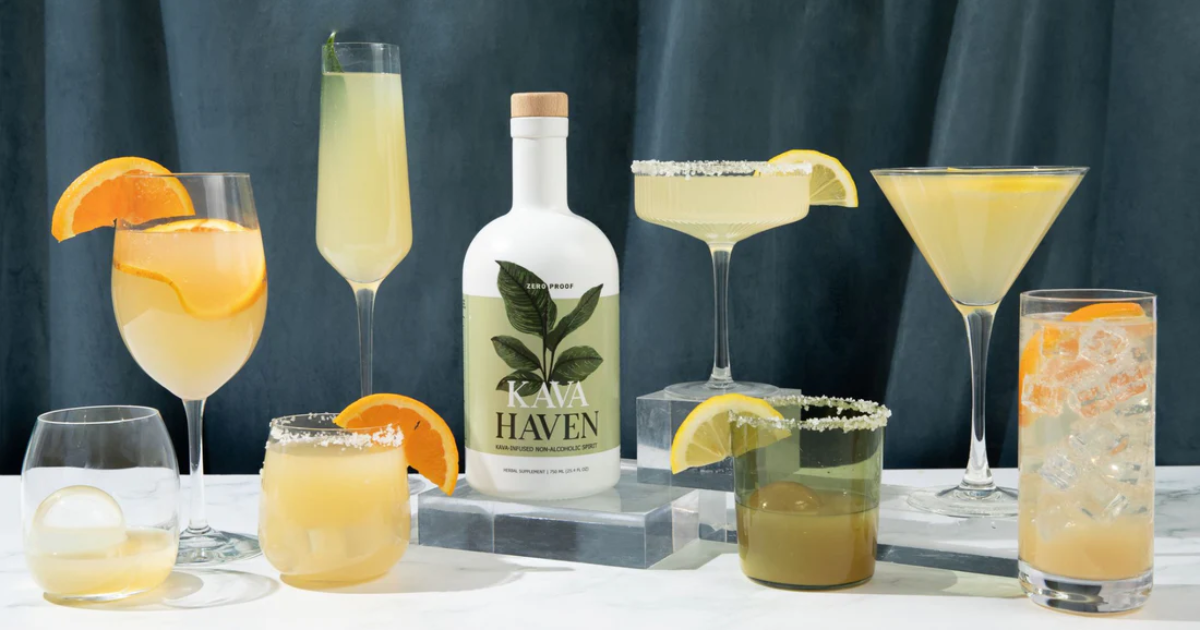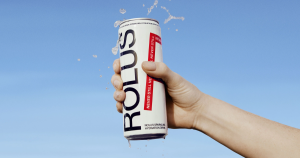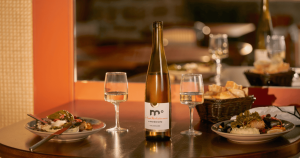By Marina Castillo, Co-Founder, The Modern Mocktail
Alternating alc with non-alc may seem like the perfect moderation strategy, but when it comes to functional drinks like kava, it’s not just a bad idea—it’s a recipe for disaster.
The rise of non-alcoholic (NA) drinks has brought with it a fresh wave of creative concepts, and “zebra striping” is one of the most popular. Alternating between alcoholic and NA drinks is often promoted as a way to balance indulgence with responsibility. But what happens when functional beverages—like kava or adaptogen-packed elixirs—enter the picture? The short answer: trouble.
Functional drinks aren’t designed to share the spotlight with alcohol, and combining the two can turn a mindful drinking experience into a nightmare. In this article, we’ll explore when zebra striping works, why it fails with functional beverages, and how to embrace a more intentional approach to NA drinking.
What is Zebra Striping?
Zebra striping, or alternating alcoholic and non-alcoholic drinks, has become a staple for social drinkers looking to pace themselves. The concept gained traction in traditional bar culture as a way to hydrate and reduce alcohol consumption while maintaining the social vibe. While useful in some settings, zebra striping has significant limitations—particularly when functional beverages are involved.
Unlike soda or juice, functional drinks like kava, kratom, or adaptogenic teas contain active compounds that interact with the body in profound ways. These ingredients often enhance relaxation, focus, or energy, but their effects can be unpredictable or even harmful when combined with alcohol.
Case Study: Why Kava and Alcohol Don’t Mix
Kava, derived from the roots of the Piper methysticum plant, has been a cornerstone of Pacific Island traditions for centuries. Known for its ability to foster relaxation and connection, kava is often consumed during ceremonial and social gatherings. Its effects come from kavalactones, active compounds that interact with the brain’s GABA receptors, promoting calmness without impairing cognitive function.
However, kava’s benefits are quickly disrupted when alcohol enters the equation. Both substances are metabolized by the liver, and their combination places undue strain on this vital organ. Research published in Food and Chemical Toxicology has shown that this dual burden can heighten toxicity risks. Adverse reactions such as nausea, vomiting, and headaches are common when kava and alcohol are consumed together.
Beyond the physical discomfort, mixing kava and alcohol undermines the mindful drinking experience that kava is meant to provide. Experts recommend avoiding alcohol entirely for at least 24 hours before and after consuming kava to allow the liver to metabolize each substance independently and avoid unnecessary strain.
The Kava Coalition points out through many publicly viewable testimonials that “many users report that drinking kava provides similar relaxation benefits to a glass of wine without the side effects often associated with alcohol consumption, such as dehydration or impaired judgment.”
So, why mix it?
A Fresh Perspective on NA Drinking
Functional beverages, such as kava, adaptogenic elixirs, and herbal tonics, have surged in popularity for their unique ability to support relaxation, focus, and energy without the need for alcohol. These drinks are often crafted with botanicals that interact with the body’s natural processes in profound ways, targeting systems such as the nervous system, adrenal glands, and immune function. Their effects can vary depending on the active compounds present, from the calming properties of kavalactones in kava to the energy-boosting effects of compounds like caffeine in guayusa or the stress-reducing benefits of ashwagandha.
The effectiveness of these ingredients lies in their potency and specificity. However, combining functional botanicals with alcohol can counteract their benefits or, worse, lead to adverse reactions. For instance, adaptogens like rhodiola or reishi mushrooms are designed to stabilize stress responses, but alcohol—a depressant—can disrupt their balancing effects. Similarly, liver-supportive herbs like milk thistle or dandelion root can be undermined by alcohol’s strain on the liver, rendering these ingredients less effective and potentially creating a toxic interaction.
These dynamics highlight why it’s crucial to approach functional drinks with intention. Attempting to “zebra stripe” with alcohol in these contexts not only diminishes the potential benefits of the botanicals but also risks nausea, overstimulation, or other physical discomforts. As with kava, many functional ingredients require full commitment to their unique effects, free from the interference of alcohol, to be truly appreciated.
By respecting the potency of functional botanicals and choosing nights dedicated to these beverages alone, you can create a more mindful drinking experience. This approach not only enhances the benefits of the ingredients but also fosters a deeper appreciation for their role in wellness and connection. Whether you’re sipping a tulsi-infused tea, a valerian root nightcap, or a turmeric and ginger tonic, the key is to let these ingredients shine on their own, allowing their natural properties to guide the experience.
Pro Tips for Non-Alc Crawls
Whether you’re exploring kava bars, bottle shops, or NA lounges, these tips will help you make the most of your experience:
Stay Hydrated: Complement your drink orders with a glass of water. This keeps your body balanced and supports the processing of functional ingredients.
Ask the Experts: Engage with your servers or kavatenders. They’re often knowledgeable about the menu and can guide you toward the best options for your preferences.
Rotate Botanicals: Don’t stick to the same functional ingredient every time. Switching it up promotes balance and reduces the risk of developing tolerance or dependency.
No Zebra Striping with Kava: If you’re consuming kava, avoid alcohol entirely for the day. The two don’t mix and can lead to severe nausea.
Trust Your Gut: If a server or kavatender doesn’t seem knowledgeable, it’s okay to walk away. Holding the industry to higher standards benefits everyone.
How the Industry Can Evolve
As the functional beverage space grows, businesses bear a responsibility to educate staff and consumers. Servers and kavatenders should understand the effects of the products they serve and be able to offer accurate recommendations. Collaboration between brands and educators can help raise industry standards and promote informed, intentional drinking practices.
By respecting the unique properties of functional beverages and fostering greater knowledge within the industry, businesses can create meaningful and enjoyable experiences for their customers.
Zebra striping may have its place in traditional bar culture, but it doesn’t belong in the world of functional beverages. By staying informed and advocating for higher standards, we can elevate the non-alc space to new heights.
About the Author
Marina Castillo is a consultant, educator, and designer specializing in the non-alcoholic, kava, and functional beverage industries. With over a decade of experience, she helps businesses optimize their operations and craft exceptional customer experiences. As co-founder of The Modern Mocktail, Marina combines her passion for mindful drinking with her expertise in strategy and design. Want to learn more about starting or expanding your non-alc venture? Click here to connect!






